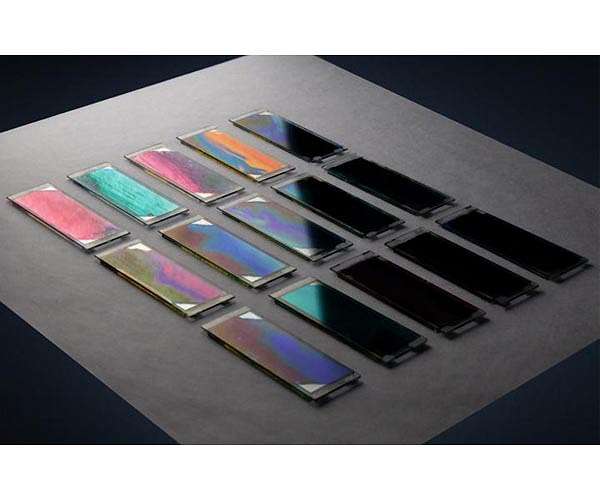JFK Airport is getting a new terminal covered by what developers describe as the largest rooftop solar array in New York City — and of any airport in the country. The solar panels are part of an energy island known as a microgrid, and this can generate enough juice to power 3,570 average American homes.
Except it won’t be able to, because the airport’s new terminal won’t contribute to the wider power supply. The solar energy it generates will remain within JFK – and any additional energy it might need when solar panels aren’t enough can come from the regional grid. In other words, the terminal will still be dependent on electricity suppliers such as Con Edison. The terminal will only operate independently of the network in emergencies.
The project is considered a victory for resilience because the airport hardens against potential power outages during storms, a major concern for any coastal infrastructure. But an energy researcher said the project would not strengthen the larger regional grid, from which the airport terminal could still draw a lot of power. Part of the problem concerns local laws that prevent microgrids from providing power to society at large.
“If you look toward the public, toward social welfare, this is definitely a lost opportunity,” said Dr. Bolun Xu, assistant professor of soil and environmental engineering at Columbia University.
To power its new terminal, due to open in 2026, JFK has hired AlphaStruxure, an alternative energy solutions company, to design and implement what will effectively be four new microgrids – three when the new terminal opens in 2026 and the fourth when it is completed by 2030. The microgrids will be an interdependent system of different types of power sources — in this case, more than 13,000 solar panels, batteries and fuel cells.
AlphaStruxure CEO Juan Macias said in an interview that this will be a huge boon as the climate continues to change.
“We have more and more severe weather events and of greater intensity, so if such an event were to hit the area we would be able to operate off the grid,” he said.
JFK’s microgrid will consist of four “power islands”, powered by 13,000 solar panels, batteries and fuel cells.
This is exactly the point of a microgrid, according to Xu. His research is focused on renewable energy systems, with a particular focus on renewable electricity. He calls these systems the future of providing security in the face of environmental disasters.
“That’s definitely the direction,” Xu said.
He said there are already a handful of microgrid pilot projects around New York City that can keep running during power outages — providing places for people to charge phones and power other necessities. He said JFK’s terminal could be New York’s largest microgrid project yet.
Grid-connected batteries, when fully charged, can export energy back to the regional grid, powering it and powering others. This project will not do that, according to Macias. AlphaStruxure said local regulations prevent it from contributing to the wider grid.
Xu also added that depending on how the company uses the microgrid, the building could still be quite a need for the region’s power plant. There are several times during an average day when the terminal could not rely solely on solar power — especially during what Xu called peak demand times. But he said if the AlphaStruxure project uses its batteries during these dips in solar production, there won’t be much need for the wider grid.
But AlphaStruxure said it has not decided how to explain the sunsets. Xu said many companies with microgrids choose not to use the battery supply, except in emergencies. Batteries like these, just like the ones in your cell phone, wear down over time.
“I wouldn’t be surprised if it decided not to use the battery at all. In that case, yes, the airport will be a big demand on the grid,” Xu said.
AlphaStruxure, for its part, claimed it will help balance the region’s grid by taking a load off it due to solar generation.
The protests coincided with the release of bodycam footage showing Nichols being beaten by several Memphis police officers.
Published on January 27, 2023 at 22:16.
The potential unrest in New York City marks a test for Adams, the city’s second black mayor and former NYPD officer who became an outspoken critic of police brutality.
The potential unrest in New York City marks a test for Adams, the city’s second black mayor and former NYPD officer who became an outspoken critic of police brutality.
Stay on top of the headlines with a roundup of important NYC stories, delivered to your inbox daily.
By submitting your information, you agree to receive communications from New York Public Radio in accordance with our Terms.
By submitting your information, you agree to receive communications from New York Public Radio in accordance with our Terms.
Is solar cheaper than electric bill?
What are the two biggest disadvantages of solar energy? Disadvantages of solar energy To see also : The dark side of solar sales: The Powerhome Solar power plant leaves customers powerless.
- The high initial costs of installing panels. The most talked about downside of solar energy, cost, is falling as the industry expands. …
- Storing solar energy is expensive. …
- Solar energy does not work for all roof types. …
- Solar panels depend on sunlight.
Is solar energy really cheaper than electricity? Although solar energy requires an initial investment to purchase and set up, people find that solar energy is much cheaper than electric power in the long run due to the increasing price of electricity.
Do solar panels make electricity bills cheaper?
Solar energy can significantly reduce your electricity bill, but you will often still have a residual bill. This may interest you : Edison’s solar prediction, Elon Musk’s $100 billion loss and green gas from landfills. The size of your electricity bill depends on many factors, including local electricity prices, the size of your system in relation to your energy needs and the time of day you use energy.
Is solar energy cheaper than electricity bills? Solar energy is clearly more cost-effective than “regular” or regular electricity. According to the World Economic Forum (WEF), installing new solar panels is cheaper than a comparable investment in coal, natural gas or other fossil fuel alternatives.
How much money do you actually save from solar panels?
On average, U.S. customers save about $1,500 a year by going solar — $37,500 over 25 years. However, for individual solar systems, these savings can range from $10,000 – $90,000 depending on roof size, sunlight exposure, local energy rates and solar incentives.
Will solar panels ever be 100% efficient? The second law of thermodynamics forbids a 100% efficient solar cell. More specifically, Carnot’s theorem applies to solar cells and any other solar energy system, where the hot side of the “heat engine” is the temperature of the sun and the cold side is the ambient temperature on Earth.
Do you actually save money going solar?
Solar panels cost money up front, but will provide significant savings on your energy bill over time. The average home can save between $20,000 and $75,000 over the life of your solar panel system, depending on electricity costs in your area.
Is going solar worth the money? Solar energy is worth it in most areas! However, factors such as available incentives, the climate, the size of the home, how much shade there is and the amount of sun a region receives, all affect how quickly you will break even on your solar investment. Take a closer look at your options in our article on the benefits of solar energy.
Do you actually save money going solar?
Solar panels cost money up front, but will provide significant savings on your energy bill over time. The average home can save between $20,000 and $75,000 over the life of your solar panel system, depending on electricity costs in your area.
Is going solar worth the money? Solar energy is worth it in most areas! However, factors such as available incentives, the climate, the size of the home, how much shade there is and the amount of sun a region receives, all affect how quickly you will break even on your solar investment. Take a closer look at your options in our article on the benefits of solar energy.
How much money do you actually save from solar panels?
On average, U.S. customers save about $1,500 a year by going solar — $37,500 over 25 years. However, for individual solar systems, these savings can range from $10,000 – $90,000 depending on roof size, sunlight exposure, local energy rates and solar incentives.
Will solar panels ever be 100% efficient? The second law of thermodynamics forbids a 100% efficient solar cell. More specifically, Carnot’s theorem applies to solar cells and any other solar energy system, where the hot side of the “heat engine” is the temperature of the sun and the cold side is the ambient temperature on Earth.
How can poor people get solar panels?
“California’s Low-Income Weatherization Program (LIWP) provides low-income households with solar photovoltaic (PV) installations and energy efficiency upgrades at no cost to residents.
How to get free solar energy for approx. California does not have a free solar installation program. No state currently has such a program. Instead, California offers tax incentives and rebates to reduce the cost of installing solar panels. This makes it cheaper to buy solar panels and convert to solar than in some other states.
Does the US government pay for solar panels? Can you get free solar panels from the government? Simply put, you can’t get free solar panels from the government. These payment plans are actually solar lease agreements, or PPAs, and they are a free upfront option that gives ownership to the solar company or installer.
Are solar panels really free in Florida?
Currently, there are no programs that offer free solar installations in Florida. However, you can go solar for $0 down by getting a loan or by signing a lease or by finding a $0 down solar financing option. In this way, you can start saving on your electricity bill right away.
Can you get solar panels for free? Can I still get free solar panels in 2023? The short answer is no, unfortunately. It’s hard to believe that in 2010 when the feed-in tariff began, companies would literally buy your solar panels for you.
How much does it cost to buy and install solar panels in Florida? Price estimates indicate that Florida solar panels cost between $10,300 and $12,600, with the federal tax credit, and the average cost per watt ranges from $2.32 to $2.83. This can be significantly less than what it would cost in other states, where the average solar power system is currently $3.00 per watt.
Does the government pay for solar panels in Florida?
There are no state solar panel rebates in Florida. However, tax credits can make the installation more affordable.
Can you get a government subsidy for solar panels? There is only one subsidy that can help you buy solar panels: ECO4. The government used to provide interest-free loans and grants as part of the Green Deal, but this ended in 2015. The feed-in tariff also expired in April 2019, but the new Smart Export Guarantee (SEG) started in January 2020.
Does Florida offer any solar incentives? There are no state solar panel rebates in Florida. However, tax credits can make the installation more affordable. Sales Tax Exemption: Under Florida’s Solar and Cogeneration Exemption, Floridians are exempt from paying the 6% sales tax on solar panels.
What credit score is needed for a solar loan? Generally, you need a minimum score of 600 or 650. However, a credit score is not the only important number when getting a solar loan: the general requirements to be approved depend on the lender and other factors, including your existing debt.



